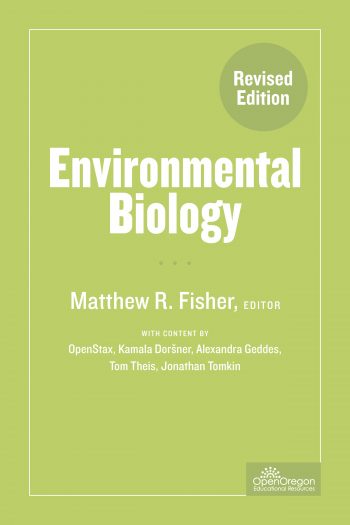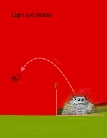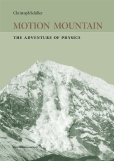
Below are Touro Library’s recommended free resources for Science courses.
This is just a sampling of the available OER. Contact OER Librarian Kirk Snyder for personalized recommendations.
For other subjects, refer to the menu on the left.


The peer-reviewed textbook below also provide ancillary resources such as PowerPoint slides, test banks, sample syllabus, etc.
Click on the book cover or the book title to access multiple formats of the textbook.
Anatomy and Physiology is a dynamic textbook for the two-semester human anatomy and physiology course for life science and allied health majors. The book is organized by body system and covers standard scope and sequence requirements. Its lucid text, strategically constructed art, career features, and links to external learning tools address the critical teaching and learning challenges in the course. The web-based version of Anatomy and Physiology also features links to surgical videos, histology, and interactive diagrams.
.jpg)


























The American Institute of Mathematics (AIM) seeks to encourage the adoption of open source and open access mathematics textbooks. The AIM Editorial Board has developed evaluation criteria to identify the books that are suitable for use in traditional university courses. The Editorial Board maintains a list of Approved Textbooks which have been judged to meet these criteria.
All of the books below, organized by course title, have been judged to meet the evaluation criteria set by the AIM editorial board.
 A Gentle Introduction to the Art of Mathematics [2015]
A Gentle Introduction to the Art of Mathematics [2015]This book is designed for the transition course between calculus and differential equations and the upper division mathematics courses with an emphasis on proof and abstraction. The book has been used by the author and several other faculty at Southern Connecticut State University. There are nine chapters and more than enough material for a semester course. Student reviews are favorable.
It is written in an informal, conversational style with a large number of interesting examples and exercises, so that a student learns to write proofs while working on engaging problems.
 Algebra and Trigonometry [2021, updated 2024]
Algebra and Trigonometry [2021, updated 2024]
Algebra and Trigonometry provides a comprehensive exploration of algebraic principles and meets scope and sequence requirements for a typical introductory algebra and trigonometry course. The modular approach and the richness of content ensure that the book meets the needs of a variety of courses.
 Algebra: Abstract and Concrete, by Frederick Goodman, provides a thorough introduction to "modern'' or "abstract'' algebra at a level suitable for upper-level undergraduates and beginning graduate students. The book addresses the conventional topics: groups, rings, fields, and linear algebra, with symmetry as a unifying theme.
Algebra: Abstract and Concrete, by Frederick Goodman, provides a thorough introduction to "modern'' or "abstract'' algebra at a level suitable for upper-level undergraduates and beginning graduate students. The book addresses the conventional topics: groups, rings, fields, and linear algebra, with symmetry as a unifying theme.
Important note: the author reserves all rights to this work. However, individual readers, classes or study groups may copy, store and print the work, in whole or in part, for their personal use. Any copy of this work, or any part of it, must include the title page with the author’s name and this copyright notice. No use or reproduction of this work for commercial purposes is permitted without the written permission of the author. This work may not be adapted or altered without the author’s written consent.

The content of this book is traditional for a first course in abstract algebra at the junior or senior level. It may be used for either one or two semesters. The exercises include both computational and theoretical and there are a number of applications. Hints or short answers are given to most problems but not fully written solutions.
Versión en español disponible aquí.

Calculus is designed for the typical two- or three-semester general calculus course, incorporating innovative features to enhance student learning. The book guides students through the core concepts of calculus and helps them understand how those concepts apply to their lives and the world around them. Due to the comprehensive nature of the material, this book is offered in three volumes for flexibility and efficiency.
Click on the volume number to see each textbook and its ancillary resources.
Volume 1 covers functions, limits, derivatives, and integration.
Volume 2 covers integration, differential equations, sequences and series, and parametric equations and polar coordinates.
Volume 3 covers parametric equations and polar coordinates, vectors, functions of several variables, multiple integration, and second-order differential equations.
 Calculus, by David Guichard [2017, updated 2021]
Calculus, by David Guichard [2017, updated 2021]
Calculus: Early Transcendentals, originally by D. Guichard, has been redesigned by the Lyryx editorial team. Substantial portions of the content, examples, and diagrams have been redeveloped, with additional contributions provided by experienced and practicing instructors. This approachable text provides a comprehensive understanding of the necessary techniques and concepts of the typical Calculus course sequence, and is suitable for the standard Calculus I, II and III courses.
To practice and develop an understanding of topics, this text offers a range of problems, from routine to challenging, with selected solutions. As this is an open text, instructors and students are encouraged to interact with the textbook through annotating, revising, and reusing to your advantage. Suggestions for contributions to this growing textbook are welcome.
Lyryx develops and supports open texts, with editorial services to adapt the text for each particular course. In addition, Lyryx provides content-specific formative online assessment, a wide variety of supplements, and in-house support available 7 days/week for both students and instructors.
Where many texts present a general theory of calculus followed by substantial collections of worked examples, we instead pose problems or situations, consider possibilities, and then ask students to investigate and explore. Following key activities or examples, the presentation normally includes some overall perspective and a brief synopsis of general trends or properties, followed by formal statements of rules or theorems. While we often offer a plausibility argument for such results, rarely do we include formal proofs.
The peer-reviewed textbooks below also provide ancillary resources such as PowerPoint slides, test banks, sample syllabus, etc.
Click on the book cover to access multiple formats of the textbook.

Prealgebra is designed to meet scope and sequence requirements for a one-semester prealgebra course. The book’s organization makes it easy to adapt to a variety of course syllabi. The text introduces the fundamental concepts of algebra while addressing the needs of students with diverse backgrounds and learning styles. Each topic builds upon previously developed material to demonstrate the cohesiveness and structure of mathematics.

College Algebra provides a comprehensive exploration of algebraic principles and meets scope and sequence requirements for a typical introductory algebra course. The modular approach and richness of content ensure that the book meets the needs of a variety of courses. College Algebra offers a wealth of examples with detailed, conceptual explanations, building a strong foundation in the material before asking students to apply what they’ve learned.
 Precalculus [2021, updated 2024]
Precalculus [2021, updated 2024]Precalculus is adaptable and designed to fit the needs of a variety of precalculus courses. It is a comprehensive text that covers more ground than a typical one- or two-semester college-level precalculus course. The content is organized by clearly-defined learning objectives and includes worked examples that demonstrate problem-solving approaches in an accessible way.
 Applied Combinatorics [2017], by Mitchel T. Keller and William T. Trotter
Applied Combinatorics [2017], by Mitchel T. Keller and William T. Trotter
Applied Combinatorics is an open-source textbook for a course covering the fundamental enumeration techniques (permutations, combinations, subsets, pigeon hole principle), recursion and mathematical induction, more advanced enumeration techniques (inclusion-exclusion, generating functions, recurrence relations, Polyá theory), discrete structures (graphs, digraphs, posets, interval orders), and discrete optimization (minimum weight spanning trees, shortest paths, network flows). There are also chapters introducing discrete probability, Ramsey theory, combinatorial applications of network flows, and a few other nuggets of discrete mathematics Instructor resources are available upon request.
 A First Course in Complex Analysis
A First Course in Complex Analysis
Matthias Beck, Gerald Marchesi, Dennis Pixton, and Lucas Sabalka
For many of our students, Complex Analysis is their first rigorous analysis (if not mathematics) class they take, and this book reflect this very much. We tried to rely on as few concepts from real analysis as possible. In particular, series and sequences are treated from scratch, which has the (maybe disadvantageous) consequence that power series are introduced late in the course. The goal our book works toward is the Residue Theorem, including some nontraditional applications from both continuous and discrete mathematics.
Important license note: Copyright 2002-2017 by the authors. All rights reserved. This book may be freely reproduced and distributed, provided that it is reproduced in its entirety from the most recent version. This book may not be altered in any way, except for changes in format required for printing or other distribution, without the permission of the authors.
 Notes on Diffy Qs: Differential Equations for Engineers [2024]
Notes on Diffy Qs: Differential Equations for Engineers [2024]A one semester first course on differential equations, aimed at engineering students. Prerequisite for the course is the basic calculus sequence. This free online book (e-book in webspeak) should be usable as a stand-alone textbook or as a companion to a course using another book such as Edwards and Penney, Differential Equations and Boundary Value Problems: Computing and Modeling or Boyce and DiPrima, Elementary Differential Equations and Boundary Value Problems (section correspondence to these two is given).
License: This work is dual licensed under a Creative Commons Attribution-Noncommercial-Share Alike 4.0 License and Creative Commons Attribution-Share Alike 4.0 License.
 Elementary Differential Equations with Boundary Value Problems [2013]
Elementary Differential Equations with Boundary Value Problems [2013]These texts are appropriate for a first course in differential equations for one or two semesters. There are more than 2000 exercises, and the student manual has solutions for most of the even numbered ones.
License: Creative Commons Attribution-NonCommercial-ShareAlike 3.0 Unported License.
 Applied Discrete Structures [2024]
Applied Discrete Structures [2024]This textbook contains the content of a two semester course in discrete structures, which is typically a second-year course for students in computer science or mathematics, but it does not have a calculus prerequisite. The material for the first semester is in chapters 1-10 and includes logic, set theory, functions, relations, recursion, graphs, trees, and elementary combinatorics. The second semester material in chapters 11-16 deals with algebraic structures: binary operations, groups, matrix algebra, Boolean algebra, monoids and automata, rings and fields.
 Discrete Mathematics: An Open Introduction [2022]
Discrete Mathematics: An Open Introduction [2022]This open source textbook is being used at the University of Northern Colorado in a discrete mathematics course taken primarily by math majors, many of whom plan to become secondary teachers. This text can also be used in a bridge course or introduction to proofs. The major topics are introduced with Investigate! activities designed to get students more actively involved and which are suitable for inquiry based learning.
Discrete Mathematics: An Open Introduction by Oscar Levin is licensed under a Creative Commons Attribution-ShareAlike 4.0 International License.
From the preface:
Geometry with an Introduction to Cosmic Topology offers an introduction to non-Euclidean geometry through the lens of questions that have ignited the imagination of stargazers since antiquity. What is the shape of the universe? Does the universe have an edge? Is it infinitely big? This text is intended for undergraduate mathematics and physics majors who have completed a multivariable calculus course and are ready for a course that practices the habits of thought needed in advanced courses of the undergraduate mathematics curriculum. The text is also particularly suited to independent study, with essays and other discussions complementing the mathematical content in several sections.
License: Copyright by author: all rights reserved; you can print copies for personal use.
 Mathematical Reasoning: Writing and Proof [2014]
Mathematical Reasoning: Writing and Proof [2014]Ted Sundstrom
Mathematical Reasoning: Writing and Proof is designed to be a text for the first course in the college mathematics curriculum that introduces students to the processes of constructing and writing proofs and focuses on the formal development of mathematics.
This work is licensed under a Creative Commons Attribution-Noncommercial-Share Alike 3.0 License.
 Math in Society [2022], by David Lippman
Math in Society [2022], by David Lippman
 Linear Algebra [2021] by Jim Hefferon
Linear Algebra [2021] by Jim HefferonFrom the American Institute of Mathematics: "This book has the standard content of a course for science, math, and engineering students that follows calculus. A semester of calculus is the explicit prerequisite, but most students would have three semesters of calculus and for them some of the beginning sections of the book can be skipped. Each chapter ends with three or four applications of that chapter’s subject."
License: This book is licensed under both the GNU Free Documentation License and the Creative Commons Attribution-ShareAlike 2.5 License,
Sergei Treil
From the American Institute of Mathematics: "Brown University has two introductory linear algebra courses. This text is used in the honors course that emphasizes proofs. The book’s title suggests that it is not the typical approach to linear algebra even among those books that are more theoretical. For example, the concept of a basis is treated as more fundamental than the concept of linear independence, and linear transformations are introduced before solving systems of linear equations. Especially noteworthy is the motivation and development of determinants."
License: This book is licensed under a Creative Commons Attribution-NonCommercial-NoDerivs 3.0 Unported License.
 A Friendly Introduction to Mathematical Logic [2015], by Christopher C. Leary and Lars Kristiansen
A Friendly Introduction to Mathematical Logic [2015], by Christopher C. Leary and Lars Kristiansen
At the intersection of mathematics, computer science, and philosophy, mathematical logic examines the power and limitations of formal mathematical thinking. In this expansion of Leary’s user-friendly 1st edition, readers with no previous study in the field are introduced to the basics of model theory, proof theory, and computability theory. The text is designed to be used either in an upper division undergraduate classroom, or for self study. Updating the 1st Edition’s treatment of languages, structures, and deductions, leading to rigorous proofs of Gödel’s First and Second Incompleteness Theorems, the expanded 2nd Edition includes a new introduction to incompleteness through computability as well as solutions to selected exercises.
Print copies available on Lulu.com, IndiBound.com, and Amazon.com.
 Tea Time Numerical Analysis, by Leon Q. Brin
Tea Time Numerical Analysis, by Leon Q. Brin



Stay connected!
Like us on FacebookLike us on Facebook Follow us on TwitterFollow us on Twitter View our InstagramView our Instagram Read our BlogRead our Blog Watch our VideosWatch our Videos